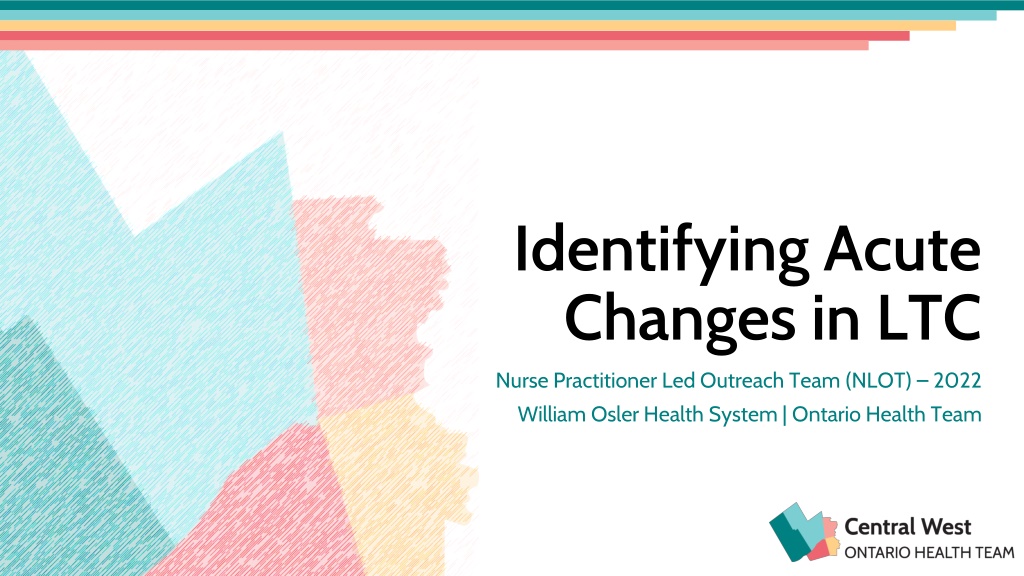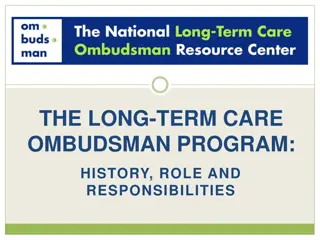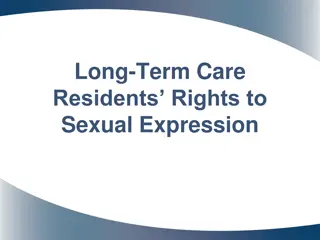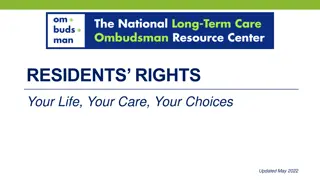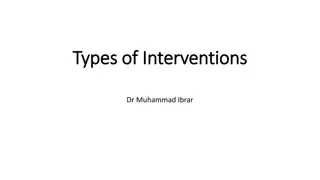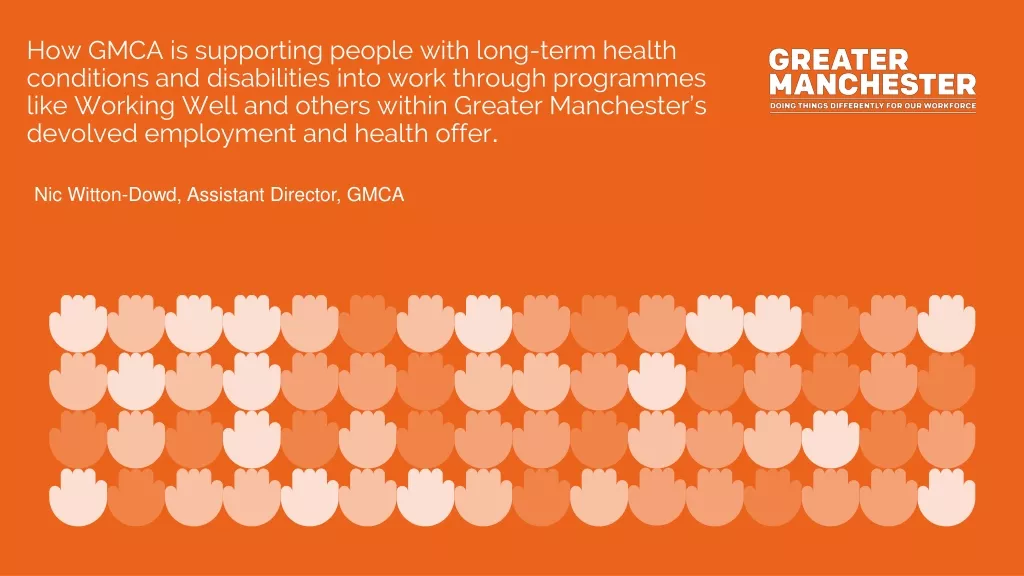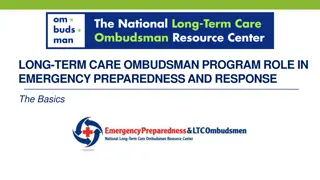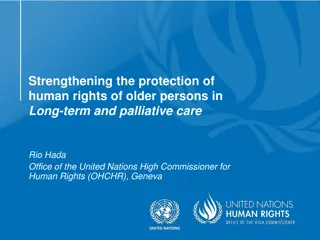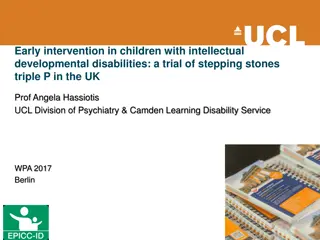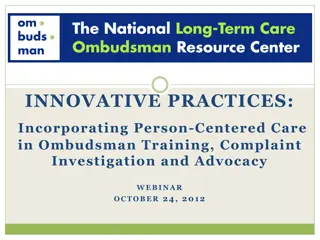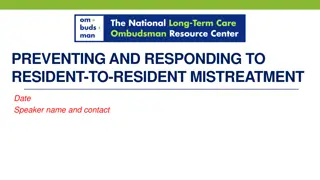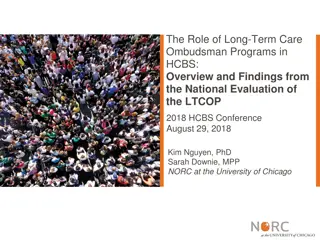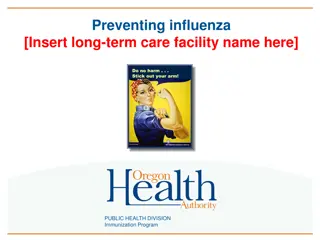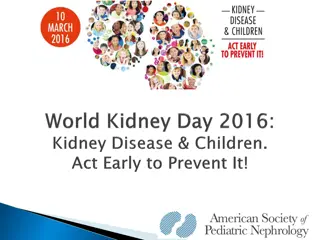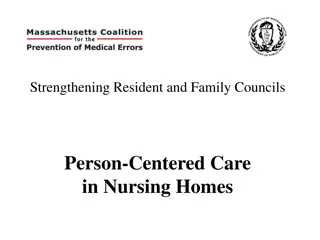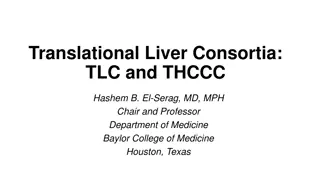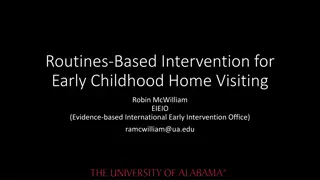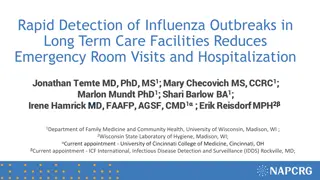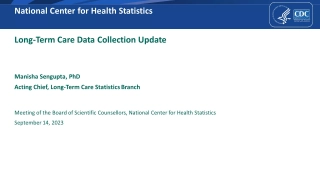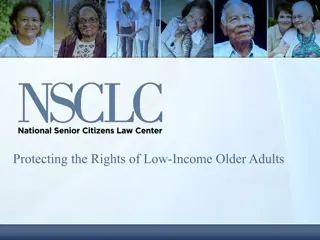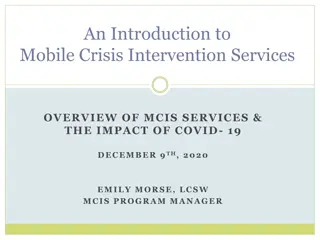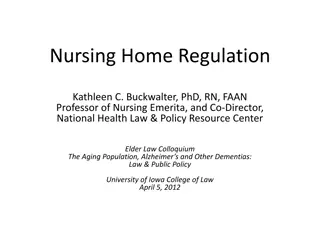Enhancing Care for Long-Term Care Residents Through Early Detection and Intervention
This collection of resources highlights the importance of identifying acute changes in long-term care (LTC) residents, focusing on potentially preventable conditions such as chronic obstructive pulmonary disease, urinary tract infections, pneumonia, and heart failure. It underscores the risks associated with hospitalizations for older adults, advocating for individualized care and early treatment at home to improve outcomes and quality of life. Key strategies include recognizing warning signs early to prevent deterioration and addressing confusion, delirium, and dementia promptly to reduce adverse outcomes in LTC settings.
Download Presentation

Please find below an Image/Link to download the presentation.
The content on the website is provided AS IS for your information and personal use only. It may not be sold, licensed, or shared on other websites without obtaining consent from the author. Download presentation by click this link. If you encounter any issues during the download, it is possible that the publisher has removed the file from their server.
E N D
Presentation Transcript
Identifying Acute Changes in LTC Nurse Practitioner Led Outreach Team (NLOT) 2022 William Osler Health System | Ontario Health Team
CIHI: Potentially Avoidable Hospitalizations from LTC https://www.cfn-nce.ca/wp-content/uploads/2018/09/2018-08- 29-cfn-webinar-grinman-cummings-.pdf
Most Common Potentially Preventable Conditions Among LTC Seniors Chronic Obstructive Pulmonary Disease Urinary Tract Infection Pneumonia Heart Failure 26% 12% 30% 14% More than HALF of the potentially avoidable visits involved patient age 85 and older. CIHI. (2014). Sources of potentially avoidable emergency department visits. https://secure.cihi.ca/free_products/ED_Report_ForWeb_EN_Final.pdf
Risks of Hospitalization for Older Adults Transfers to hospital for assessment/treatment of a change in condition are often of uncertain benefit, may result in increased morbidity as well as: Delirium/Cognitive Changes Hospital Acquired Infections Medication Side Effects Sleep Deprivation Rapid Loss of Muscle Strength while Bedridden Increased Falls Increased Risk of Death within 3 months of Hospitalization Harms often outweigh benefits. https://choosingwiselycanada.org/recommendation/long-term-care/
Choosing Wisely Canada Recommendations for Long Term Care Residents assessed and treated at their home will receive more individualized care, better comfort and end of life care. https://choosingwiselycanada.org/recommendation/long-term-care/
Typical Patient Trajectory PEARL: Identify the WarningSigns in order to start treatment early and prevent further deterioration The sooner, The better! https://www.cfn-nce.ca/wp-content/uploads/2018/09/2018-08-29-cfn-webinar-grinman- cummings-.pdf
Confusion Delirium Superimposed on Dementia Delirium Dementia
Considered a Medical Emergency Occurs in 10-60% of older hospitalized patients Rarely identified by physicians and nurses Associated with: Increased long-term care admissions Increased length of stay and cost Functional decline Increased restraint use Increased mortality Delirium Acute and fluctuating onset of confusion Disturbed consciousness (attention/awareness) Disorganized thinking and speech Perceptual disturbance (delusions, hallucinations)
CAM Tool Feature 1: Acute Onset and Fluctuating Course Is there evidence of an acute change in mental status from baseline? Did that change fluctuate throughout the day tend to come and go or or in severity? Feature 2: Inattention Did the resident have difficulty focusing attention (being easily distracted or keeping track of what was said)?. Feature 3: Disorganized Thinking Was the resident s thinking disorganized or incoherent (rambling/irrelevant/unclear or illogical flow of ideas) Feature 4: Altered level of consciousness How would you rate this resident s level of consciousness (alert normal, vigilant hyper alert, lethargic drowsy, stupor difficult to rouse or comatose unrousable) If features 1 & 2 +3 or 4 are present a diagnosis of delirium is suggested, recommend assessment and follow-up. https://www.albertahealthservices.ca/assets/about/scn/ahs-scn-bjh-hf-delirium-screening-tool.pdf
Hyperactive Delirium Agitation Hallucinations & delusions Restlessness Delirium Hypoactive Delirium Attention deficit Hyper somnolence Mixed Delirium Fluctuating Hyper and Hypo
First Step: Recognize & Identify
Vital Signs Heart Rate: Less than 50bpm/min or greater than 120bpm/min Greater than 100bpm/min plus other symptoms Temperature: Greater than or equal to 1.1 C change from baseline Two or more measurements of oral temperature greater to or equal to 37.2 C Greater to or equal to 37.7 C Blood Pressure: Less than 90mmHg or greater than 200mmHg systolic Sudden 15-20mmHg decreases plus other symptoms Respiratory Rate: Less than 10bpm/min or greater than 28bpm/min Laboured breathing (subjective)
Warning Signs Changes in: Function changes in mobility (weakness/frailty) and baseline activity Intake change in baseline oral intake (food/fluid) Output - / in output, change in appearance/color/odour Mental Status/Cognition/Behaviour Delirium, confusion, lethargy Appearance pale, Diaphoretic, generally looking unwell New Onset of Pain Recurrent Falls Trust your instincts!
Atypical Presentation Infection: Myocardial Infarction: Syncope Weakness Delirium Shortness of breath May not present w/ fever (especially if on scheduled Tylenol) Confusion Falls Anorexia Delirium Heart Failure: Weakness Light-headedness Fatigue Decreased activity COPD: Limited activity Fatigue
Second Step: Look for Cause
Looking for a Cause Consider Risk Factors Advanced Age Dementia New Disease, Infection, Illness Multiple Co-Morbidities Dehydration, Nutrition Medication (New or Recent Changes) ETOH Fractures and/or Trauma Post-Operative New Pain Changes in Environment Changes in Elimination (Constipation) Immobility Sensory Impairment Sleep Deprivation
What has changed? Altered level of consciousness Possible causes Frontline Interventions Vitals monitoring Infection (Respiratory/Urinary most common) Hydrate as tolerated (HOB > 90 degrees) Altered level of alertness Cardiac (CHF) Electrolyte abnormalities Call MD/NP Dehydration Stroke Respiratory infection (pneumonia) CHF exacerbation COPD exacerbation Shortness of Breath Vitals monitoring Supplemental O2 if SpO2 < 92% (88% w/ COPD) HOB > 90 degrees Call MD/NP Take Action
What has changed? Abdominal Pain Possible causes Frontline Interventions Vitals monitoring Constipation (N/V) Diarrhea Urinary infection/retention Limit solids if vomiting (push fluids as tolerated) Vomiting/Nausea (N/V) Obstruction/Ileus (N/V) Check bowel history C-Diff (Diarrhea) Follow bowel protocol if constipated Cholecystitis/Pancreatitis Appendicitis Call MD/NP Diverticulitis Genitourinary Changes (Urine) Infection (associated w/ changes in color/smell and frequency) Vitals monitoring Note color/appearance Call MD/NP Take Action
Situation: What is the concern? Background: What do you know? Communication & SBAR Action/Assessment: What did you do? Assessment Interventions Recommendation/Request: What help is needed?
What is Sepsis? Severe infection spreading via the bloodstream Bacterial, Viral; Fungal Infections in lungs, kidney, skin, abdomen etc. can spread and lead to sepsis If suspected/confirmed: It is Crucial to monitor closely for signs & symptoms of rapid progression Nurse is often the first to recognize sepsis as well as risk of sepsis Early recognition and rapid response are essential for successful treatment of sepsis
Signs and Symptoms Fever or very low body temperature Temperature greater than 38 C or lower than 36 C Chills/Rigors Increased heart rate Heart rate greater then 90bpm/min Increased respiratory rate Respiratory rate greater than 20bpm/min Low blood pressure Systolic blood pressure lower than 90mmHg Decreased or absent urine output New onset confusion Rash
Systemic Inflammatory Response Syndrome (SIRS) Systemic Inflammation Suspect if two or more of the following: Temperature greater than 38 C or lower than 36 C Heart rate greater then 90bpm/min Respiratory rate greater than 20bpm/min Elevated or decreased white blood cell count If suspected: Monitor
Why is this Important? Early recognition and rapid response are essential to successful treatment of sepsis Prognosis is dependant on: Age Health status Time to diagnosis & treatment Type of organism Improving outcomes depends on every frontline healthcare provider involved in resident s care
Teams are more likely to be effective when they have: Clear Vision and Goals Good Communication Clear Roles and Responsibilities Support for Each Other Responsibility for Evaluation Effective Teams
